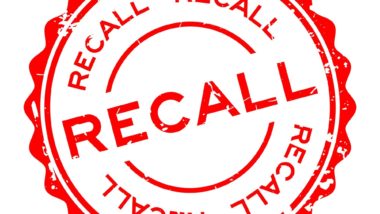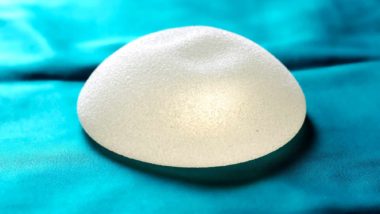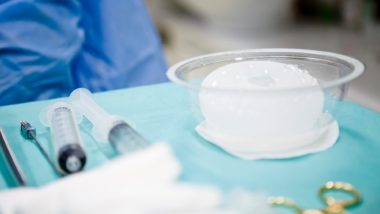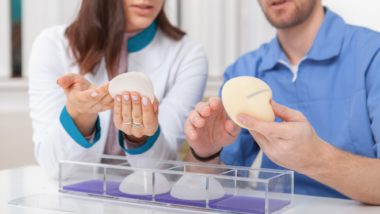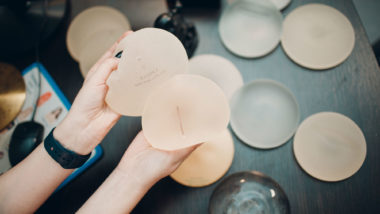Top Class Actions’s website and social media posts use affiliate links. If you make a purchase using such links, we may receive a commission, but it will not result in any additional charges to you. Please review our Affiliate Link Disclosure for more information.

About Breast Implant-Associated Anaplastic Large Cell Lymphoma
BIA-ALCL is a type of non-Hodgkin’s lymphoma, a cancer that affects the immune system. It often begins in the white blood cells known as lymphocytes. Generally, according to the FDA, BIA-ALCL develops in the scar tissue and fluid capsule that often surrounds breast implants, but it may also spread throughout the body.
FDA Research Into Breast Implant-Associated Anaplastic Large Cell Lymphoma
The FDA announced the link between breast implants and BIA-ALCL following a two-day public hearing held in March. At this hearing, cancer researchers and breast implant manufacturers presented data regarding the condition, and women who had been diagnosed with BIA-ALCL shared their personal stories.
According to a statement released by the FDA’s Principal Deputy Commissioner Dr. Amy Abernethy and Director of the Center for Devices and Radiological Health Dr. Jeff Shuren regarding the hearing, “While the FDA doesn’t have definitive evidence demonstrating breast implants cause these symptoms, the current evidence supports that some women experience systemic symptoms that may resolve when their breast implants are removed.”
The FDA has known about a possible connection between breast implants and anaplastic large cell lymphoma since 2011. However, at that time, there were so few reported cases of the cancer that it was not possible to identify the factors that increased the risk for patients to develop the condition. Although it is still unclear how commonly this condition occurs in patients who have breast implants, the data that the FDA now has indicates that there is indeed a link. In 2016,the World Health Organization officially recognized breast implant-associated anaplastic large cell lymphoma (BIA-ALCL) as a unique type of breast implant-associated cancer.
As of September 2018, the FDA has received 660 medical device reports (MDRs) of BIA-ALCL occurring in patients with breast implants. These reports include nine reports of patient deaths resulting from the condition. In addition to these identified cases, there may be countless more cases that have not yet been reported to the FDA.
While BIA-ALCL may occur in conjunction with any type of breast implant, the current data suggests that it is more likely to develop in patients who have received breast implants with textured surfaces rather than those with smooth surfaces. According to the Mayo Clinic, current research into the frequency of BIA-ALCL occurrences shows that the cancer may develop in as many as one in every 3,817 women to 1 in every 30,000 women with breast implants.
The Connection Between BIA-ALCL and Breast Implants
Approximately 10 million women around the world have undergone breast implant surgery, and around 400,000 women in the U.S. opt for implants each year. Seventy-five percent of these implant surgeries are done for cosmetic purposes, with 25 percent being done for breast reconstruction after mastectomies.
Breast implants approved for use in the U.S. may either be filled with silicone gel or saline. These implants may have smooth or textured surfaces, depending on the brand and type. Most cases of BIA-ALCL have been identified in women with textured implants. These implants have a rough or textured surface, which is meant to promote adherence between the surface of the implant and the surrounding tissue. After these implants are placed inside of the patients chest, a capsule of scar tissue and fluid begins to grow around the implant, holding it in place and preventing migration. It is inside of this capsule that BIA-ALCL most often develops.
Textured implants make up approximately 80 percent of the breast implant market in other countries, but represent only about 10 percent of the U.S. market. Although these implants have been banned in other countries, including France, the U.S. FDA has so far declined to ban these implants from the U.S. market, claiming that there is a lack of sufficient evidence suggesting that the implants are inherently dangerous.
The agency has stated that it will increase its efforts to collect and disseminate information about risks associated with these implants and raise awareness for patients. Additionally, the agency says that it is considering adding a boxed safety warning to breast implants, as well as requiring both doctors and patients to sign risk checklists prior to implantation. These steps may be put in place to ensure that patients have the information necessary to make an informed decision regarding the procedure.
Who is at Risk for Breast Implant-Associated Anaplastic Large Cell Lymphoma?
Anyone with breast implants may be at risk of developing BIA-ALCL. The condition may occur in patients who have received saline or silicone implants. Although evidence suggests that BIA-ALCL is more likely to develop around textured implants, it may also occur with smooth implants. On average, breast implant-related cancer is found eight to 10 years after the implantation surgery, although it may develop as early as one year after surgery. Patients who experience breast pain, unexplained lumps, or breast swelling may want to seek medical attention to rule out breast implant-related cancer or illness.
Symptoms and Treatment of Breast Implant-Associated Anaplastic Large Cell Lymphoma
BIA-ALCL is generally diagnosed a decade or more after the initial implant surgery, according to CNN. Symptoms of BIA-ALCL may include breast pain, swelling, unexplained lumps in the breast or armpit, changes in breast appearance, fluid build up, skin rash, or breast asymmetry. At this time, patients without symptoms are not recommended to prophylactically have their implants surgically removed solely due to fears of future cancer.
If BIA-ALCL is caught early, treatment is relatively simple. Treatment of BIA-ALCL most often includes removal of the implants. Additional treatment may include removal of the scar tissue capsule surrounding the implants, which is where BIA-ALCL usually begins its development. For some patients, chemotherapy and radiation may also be recommended if the condition has spread throughout the rest of the body, however, this is relatively rare.
In addition to BIA-ALCL, breast implants may also be associated with a variety of symptoms and issues known as “breast implant illness.” This cluster of symptoms has been reported by many women following their breast implant surgeries, and includes side effects such as chronic fatigue, cognitive difficulties, chronic pain, and immune system problems. Women have also reported side effects possibly related to breast implants, including arthritis, fibromyalgia, MS, sarcoidosis, and cancers of the brain, cervix, lungs, respiratory tract, and vulva.
Victim Stories and Lawsuits
Many breast implant patients have complained that they were not adequately informed of the risks associated with these implants prior to their implantation surgery. Breast implants are marketed as a safe cosmetic procedure with very few side effects. Victims have argued that the FDA should conduct further research into the safety of these products in regards to cancer, especially as breast implants are often chosen by women who have already survived cancer.
According to one victim, who shared her story with the Iowa City Press Citizen, she received her cosmetic breast implants following her elective, prophylactic double mastectomy. Tara A. chose to undergo breast removal surgery following the diagnoses of four of her family members with breast cancer. She says she was initially implanted with smooth implants, but later switched to textured implants in an attempt to prevent the implants from migrating to her armpit.
Despite feeling as though she had made the right choice in removing her breasts, Tara claims to have suffered painful and chronic complications from her implants. In addition to side effects including daily pain, the need for further surgeries, exhaustion, and loss of enjoyment in life, Tara now believes she may have developed BIA-ALCL. According to her, she has symptoms that indicate the presence of the condition, including breast lumps, swelling, asymmetry, fatigue, and inflamed lymph nodes.
According to The Guardian, a group of more than 200 women are considering taking legal action against one manufacturer of textured breast implants. Implants made by the Allergan company have been cited in several cases of BIA-ALCL, and have been taken off the market in France and the U.K. Several of the women seeking class action status underwent preventative mastectomies due to fears of breast cancer. They claim that they are now anxious at the thought that their preventative surgery may actually cause them to develop the condition. Allergan claims that “the benefit risk profile of textured implants – based on scientific evidence – remains positive.”
Women who have developed BIA-ALCL after receiving breast augmentation or reconstructive surgery may find it helpful to consult with a medical device attorney in order to determine whether they qualify to join or file a breast implant cancer lawsuit.
Cancer treatment may be costly, stressful, and debilitating, and can result in a variety of expenses including medical bills, loss of wages, loss of earning capacity, and transportation and lodging costs. Women who have been diagnosed with cancer due to a defective medical product may be able to file a class action lawsuit against breast implant manufacturers, and pursue damages and compensation for their pain and suffering, medical expenses, and injuries.
Hiring a medical device attorney will cost victims nothing up front. These attorneys only take a percentage of your awarded compensation if you win your case or agree to a settlement.
Join a Free Breast Implants Side Effects Lawsuit Investigation
You may qualify for this breast implant investigation under the following circumstances:
- You were implanted with textured breast implants;
- You were diagnosed with Breast Implant-Associated Anaplastic Large Cell Lymphoma (BIA ALCL); and/or
- You’ve suffered from any illness you believe is related to the implants.
Fill out the form on this page for a free case evaluation by a breast implants injury attorney.
This article is not legal advice. It is presented
for informational purposes only.
ATTORNEY ADVERTISING
Top Class Actions is a Proud Member of the American Bar Association
LEGAL INFORMATION IS NOT LEGAL ADVICE
Top Class Actions Legal Statement
©2008 – 2024 Top Class Actions® LLC
Various Trademarks held by their respective owners
This website is not intended for viewing or usage by European Union citizens.
Get Help – It’s Free
Join a Free Breast Implants Side Effects Lawsuit Investigation
If you qualify, an attorney will contact you to discuss the details of your potential case at no charge to you.
PLEASE NOTE: If you want to participate in this investigation, it is imperative that you reply to the law firm if they call or email you. Failing to do so may result in you not getting signed up as a client or getting you dropped as a client.
E-mail any problems with this form to:
Questions@TopClassActions.com.


